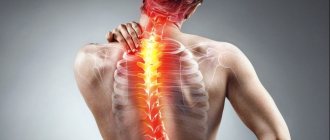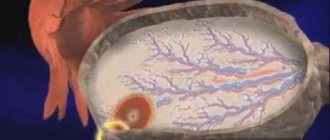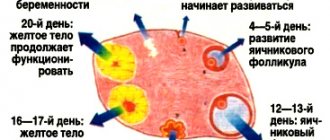Let's understand the term "ovulation"
The duration of the menstrual cycle is determined from the first day of the previous menstruation to the first day of the next. Its duration varies and normally ranges from 21 to 35 days. The ideal menstrual cycle is considered to be a cycle lasting 28 days, which corresponds to a full lunar cycle. The menstrual cycle consists of several phases:
Follicular phase
The follicular phase is caused by the action of estrogens, under the influence of which a dominant follicle is determined in the ovary, in which the future egg matures. This phase lasts an average of 12–18 days, depending on the length of the cycle. With a 28-day period it is 14 days. Towards the end of the follicular phase, the dominant follicle has reached its maximum development, is tense and is preparing to burst.
Ovulatory phase
The shortest phase of the menstrual cycle, its duration is 12 – 36 hours. During this phase, estrogen levels drop, causing the main follicle to burst and release a mature egg, ready for fertilization. What is characteristic is that it is during the ovulatory phase that the level of both estrogen and progesterone is quite low (estrogens are no longer synthesized, since the dominant follicle and egg have already “matured”, and progesterone is not yet produced in sufficient quantities under the influence of luteinizing hormone due to the still unformed corpus luteum in place of the main follicle).
Luteal phase
The synthesis of progesterone increases, under the influence of which proliferative processes occur in the uterine mucosa, preparing it for implantation of a fertilized egg. In the case of unsuccessful fertilization, by the end of the luteal phase, the level of progesterone decreases (the corpus luteum of menstruation dies) and the functional layer of the endometrium is rejected, which is called menstruation.
So, ovulation is nothing more than the process of the release of a mature egg from the dominant follicle at the moment of its rupture. And painful ovulation is called ovulatory syndrome or Mittelschmertz syndrome.
Headache during ovulation - what to do
Often women complain that their head hurts a little during ovulation. There are various explanations for this.
If headaches occur before the onset of ovulation, this is most likely due to a decrease in estrogen in the blood. As a result, the vessels leading to the brain contract, less oxygen flows to the cells of the head, and this leads to headaches.
During pregnancy, you may also experience a headache. This is due to early toxicosis and the restructuring of the woman’s body for pregnancy.
After the oocyte is released from the follicle, the uterus periodically contracts to allow the movement of the egg. Such spasms lead to pressure on the blood vessels, which is why symptoms of hypoxia are present.
Taking contraceptive medications changes the hormonal levels of the female body, which at the time of ovulation leads to discomfort and headaches.
Healthy eating and a healthy lifestyle will help improve your health and rid yourself of this unpleasant condition. Increasing your diet with vitamins also has a beneficial effect on the processes occurring in the female body.
Signs of ovulation
Ovulation (from the Latin word for “egg”) has characteristic signs, and every woman experiencing discomfort or pain associated with it can almost accurately determine its onset:
Pain in the right side or left
Pain occurs on a certain side, depending on which ovary “works” in a given menstrual cycle (most often, right-sided pain is observed, which is associated with better blood supply to the right ovary and its innervation, as well as with the close proximity of the appendix).
As a rule, the pain is minor and may cause only mild discomfort. In some cases, women characterize the pain as cutting, stabbing or cramping. This feeling does not last long, from an hour to a day or two. The intensity of pain depends on:
- character - emotional representatives of the fairer sex feel pain more clearly
- the presence of gynecological diseases contributes to increased pain
- pain sensitivity threshold - the higher it is, the less pain a woman experiences during ovulation.
Thus, ovulation itself is short-lived, and pain in the lower abdomen after ovulation may persist for one to two days. Since only one ovary is involved in ovulation in each menstrual cycle, they function alternately, that is, pain can be on the right in one month and on the left in another.
In rare cases, when both ovaries are involved in the work, 2 eggs mature at the same time, which, if fertilized successfully, leads to multiple pregnancies. In such a situation, a woman feels pain on both sides or a diffuse aching pain in the lower abdomen.
Increased libido
Libido, or sexual desire, increases somewhat during the period of ovulation, which is inherent in nature itself (after all, ovulation is the most favorable moment for conception, and therefore for procreation).
Discharge
On the eve of ovulation, at the moment of its completion, and for another couple of days, the nature of vaginal discharge changes. They become more liquid, stretchy and look similar to egg white. These changes in secretions are necessary to create favorable conditions for the penetration of sperm into the uterine cavity to fertilize a mature egg. The liquid consistency of the discharge in the slightly expanded cervical canal facilitates the passage of the “live animals” into the uterus.
Changes in discharge color
During ovulation and some time after it, the color of the discharge may also change. They take on a pinkish tint or a few drops of blood are found on the underwear (see spotting in the middle of the cycle). This is due to a slight detachment of the endometrium (estrogens are no longer produced, and progesterone has not yet begun to be synthesized).
Pain in the mammary glands
Pain or tenderness of the breasts may occur during ovulation (see pain in the mammary glands), which is associated with the initial preparation of the mammary glands for pregnancy and lactation. Such pain (mastodynia) is short-lived and stops by the time the corpus luteum forms.
The nature and intensity of pain in the middle of the cycle
The pain experienced during ovulation, as during menstruation, can be considered normal in approximately 85% of all cases. Of the women who feel the passage of an egg, about half complain that their stomach hurts like during menstruation.
Painful sensations in the abdomen, like during menstruation, are a completely understandable phenomenon from the point of view of the physiological cycle. The middle period from one menstrual cycle to the next is the period of passage of a fairly large egg through zones of intense blood supply and many nerve endings. Their irritation leads to stomach pain during ovulation, as during menstruation.
The female half of the population, who have a low pain threshold, can sometimes even lose consciousness and lose their ability to work. Some women only sometimes experience a pulling sensation, while others experience a pulling sensation in the lower abdomen after ovulation, but not very pronounced.
The pain can be cutting or unbearable. The localization of the unpleasant sensations depends on where the small amount of blood that appears when the vessels that supply the follicle with nutrition ends up. Approximately the same amount of fluid is released in which the oocyte (immature egg) was located. Pain can be of varying degrees of intensity and variable dislocation:
- on the left, or on the right on one side;
- gradually moving to the area above the pubis;
- in the lumbar region, when humoral fluid flows into the space between the rectum and vagina.
Causes
There are several causes of pain during ovulation. Before it begins to emerge from the follicle, it must mature and significantly increase in size.
- The large “dimensions” of the follicle stretch the ovarian capsule, which explains the occurrence of pain before ovulation.
- After the dominant follicle has reached the “desired condition,” it bursts and a ready-made egg is released into the abdominal cavity.
- At the moment of rupture of the follicle, in addition to the egg, a certain amount of fluid is poured into the abdominal cavity, which irritates the parietal peritoneum. In addition, the ovarian capsule is damaged, in which small blood vessels burst, resulting in even a small amount of blood entering the abdominal cavity, which also irritates the peritoneum.
- Such nagging pain after ovulation can bother a woman for 12 to 48 hours. But then the blood and follicular fluid in the abdomen are absorbed and the pain syndrome disappears.
- And since at the moment the egg appears in the abdominal cavity, the fallopian tubes begin to peristalt (contract) more strongly in order to have time to capture a viable egg and ensure that it meets the sperm, pain can be maintained by this process.
- An indirect sign of a possible future pregnancy is pain in the middle of the cycle.
But in some cases, the pain syndrome at the time of ovulation is more pronounced, which is due not only to the threshold of pain sensitivity, but also to the presence of certain gynecological diseases, for example:
- adhesive disease of the pelvis, which may be caused by chronic inflammation, a history of surgery or endometriosis
- adhesions do not allow the tubes to contract calmly and tighten the ovary, and in some cases cause compaction of its capsule, all this increases the severity of pain.
Pain during ovulation: nature, duration, causes
Not everyone experiences painful ovulation. Some women do not feel pain at all, and can guess the release of the egg only by indirect signs:
- mood changes;
- increased sexual desire;
- increasing the number of daily secretions.
Many representatives of the fair sex, in addition to or instead of the signs listed above, notice a pulling sensation in the right or left side of the abdomen during the release of the egg. Discomfort in this case is a gynecological norm.
It is worth noting that pain during ovulation should be tolerable, allowing a woman to live at her usual rhythm, and not lie down on the sofa and leave work.
Physiological causes of pain during ovulation
All physiological causes of discomfort are associated with the growth and development of the egg and its subsequent movement into the uterine cavity:
- The follicle in which the egg is located grows and fills with fluid, its volume also gradually increases. Initially, the follicle is only about 1 mm in size, but by the time of ovulation it increases to 16-20 mm and stretches the ovarian capsule, which causes nagging pain in the lower abdomen.
- A fully mature egg tries to leave the follicle, tearing its walls. At this moment, the woman may feel pain at the location of the ovary.
- When the reproductive cell is released, a small amount of follicular fluid and blood is released, irritating the internal organs and causing discomfort in the abdominal area.
- After the release of the egg, the fallopian tube actively begins its work, it contracts and pulsates, trying to push the reproductive cell further.
The main cause of pain during ovulation is the maturation of the egg.
Sometimes pain a few days after ovulation can be associated with successful fertilization of the egg, that is, pregnancy. They are not strong, similar to the sensations during menstruation. During this period, a woman may release a small amount of blood. The pain in this case is associated with the attachment of the zygote to the body of the uterus. This is exactly how I experienced the onset of my first pregnancy.
In general, pain during ovulation should not last more than two days and be unbearable, and slight bleeding during this period is also acceptable.
Interesting fact! The ovaries work alternately. One month the left ovary carries the egg, the next month the right ovary. Because of this, pain in the middle of different cycles can be felt on one side or the other.
Pathological causes of pain
Every woman should closely monitor her health and remember that certain deviations in the functioning of her body may indicate the presence of unpleasant diseases. Here are some pathologies that may cause a woman to feel discomfort in the lower abdomen:
- hormonal imbalances - disruptions in the functioning of a woman’s endocrine system, which can lead to changes in the functioning of many body systems, including the reproductive system;
- uterine fibroids (hormone-dependent, benign tumor of the uterus) manifests itself with pain symptoms in the lower back or lower abdomen;
- infections of the genitourinary system: chlamydia, gonorrhea, cystitis, etc.;
- follicle cyst - a benign formation that forms from the follicle in the absence of ovulation;
- rupture of an ovarian cyst. The pain can be very severe, and dizziness, including loss of consciousness, is possible. There may be slight bleeding from the genital tract.
Pain in the lower abdomen in the middle of the cycle may indicate serious health problems
- development of menopause. On average, symptoms of menopause appear after 45 years of age, but there are cases when this condition can develop earlier. In a woman, the amount of estrogen hormones decreases, which affects the process of formation of germ cells;
- endometriosis (overgrowth of the lining of the uterus). Due to enlarged tissue foci in the pelvis, the volume of circulating blood increases. Sensitive women note the appearance of heaviness in the lower abdomen and slight cramps;
- andexitis (inflammation of the uterine appendages: fallopian tubes, ovaries, ligaments). Nausea, vomiting, severe abdominal pain and fever are observed;
- ectopic pregnancy - the attachment of a zygote and the development of pregnancy outside the uterine cavity (in the fallopian tube, ovary or abdominal cavity), which entails possible infertility and even a threat to the woman’s life.
When to sound the alarm and contact a specialist
Most often, a woman worries in vain, and all the symptoms she feels are signs of the natural course of the process in her body. However, you should contact the clinic if:
- the nature of the pain has changed compared to what was previously experienced;
- pain in the pelvis is noticed for the first time or was previously less severe;
- painful sensations localized in the ovarian area began to radiate to other organs.
An urgent visit to the doctor should be in the case when pain in the middle of the female cycle does not disappear within two to three days, and is also combined with other troubles:
- the pain is so intense that you lose consciousness (in this case, you should consult a doctor immediately);
- vomiting, nausea, severe headaches, dizziness, increased body temperature, pain during urination, and shortness of breath appear.
For some women suffering from various types of pain during ovulation, gynecologists recommend keeping a diary or ovulation calendar. In it, patients note the nature of the discomfort and its intensity during each cycle. Having studied her observations, a woman can understand whether the pain is of a standard nature and is associated with ovulation or may be the cause of any malfunctions in the body. If the sensations are regular and do not become more intense or last longer, there is no need to worry.
A gynecologist can help create an ovulation calendar
In any case, each disease manifests itself in the form of symptoms, the timely diagnosis of which makes it possible to identify the problem at the stage of its formation. Therefore, scheduled visits to the gynecologist twice a year are recommended.
Video: why women have pain in the lower abdomen
Types of ovulation
There are several types of ovulation:
- premature;
- timely;
- late.
Premature ovulation is the maturation and release of an egg from the follicle not in the middle of the cycle, but much earlier and can be caused by several factors:
- excessively violent sexual intercourse (see causes of pain during sexual intercourse);
- increased physical activity or heavy lifting;
- stress and strong emotional experiences;
- various diseases, including gynecological ones;
- hormonal disorders and endocrine pathology.
The etiology of late ovulation includes various hormonal problems, including menstrual irregularities.
In connection with the described types of ovulation, pain, accordingly, does not occur, as is customary, in the middle of the cycle, but much earlier or, on the contrary, later, which can become a cause for concern for a woman (see also symptoms of premenstrual syndrome). Therefore, an indirect sign of a possible future pregnancy is pain in the middle of the cycle.
Side pain
It so happens that a woman often complains that her side hurts during ovulation. What this pain is associated with and how to eliminate it - we will analyze it with you. So, the onset of ovulation in the body of a woman of reproductive age is indicated by the so-called ovulatory syndrome, the main clinical manifestation of which is pain in the lower abdomen, lower back or pain in the side during ovulation.
The mechanism of pain during ovulation is quite easily explained. It is important to remember about the peculiarities of the blood supply to the ovaries, because it is the right ovary that is much better supplied with blood than the left, which is associated with physiological characteristics, therefore during ovulation the right side hurts much more than the left.
Ovulation - the right side hurts most often and much more severely. Everyone has long known that ovulation itself is accompanied by the release of a mature egg capable of fertilization; it is the surface of the ovary, where it is captured by the fimbriae of the fallopian tubes, which facilitate its entry into the cavity of the tube, in which it moves due to their peristalsis and enters the uterine cavity, where and its fertilization and implantation occurs. Depending on which side hurts during ovulation, we can assume the presence of ovulation in that ovary, but at the same time, if ovulation occurs in the left ovary, then the pain syndrome is much less pronounced, which is due to the peculiarities of its blood supply.
If your lower back hurts during ovulation, this indicates an accumulation of blood and follicular fluid that was released during the release of the egg from the follicle, in the deepest place of the abdominal cavity - behind the uterine space. A woman’s body is designed in such a way that all the fluid that is produced in the abdominal or pelvic cavity flows into the deepest place, located between the back wall of the uterus and the rectum. By irritating the nerve endings that are located here, pain occurs not only in the lower back, but can radiate to the stomach or rectum.
If lower back pain is associated with a combination of the symptoms listed below, then you should contact a medical facility as soon as possible to provide qualified assistance. These include dizziness, nausea, vomiting, difficulty breathing, and pain when urinating. After excluding acute surgical pathology, the doctor will prescribe analgesics that will help eliminate pain and alleviate the woman’s condition.
Severe lower back pain during ovulation may be associated with:
- hormonal dysfunction in the body
- rupture of the follicular wall, leakage of follicular fluid along with the release of the egg, as well as minor hemorrhage at the site of the rupture
- long-term chronic sluggish process in the reproductive organs
- the presence of atypical tissues in the uterine cavity
- cystic degeneration of the dominant follicle
- the presence or occurrence of genitourinary tract infection.
In most cases, lower back pain is associated with rupture of the follicle or hormonal changes in the body. Under the influence of progesterone, which is produced in large quantities during ovulation, the smooth muscles of the uterus contract, which leads to muscle tension and increased pressure on the spine. If there is a bending of the uterus, pain during ovulation, as well as during menstruation, is inevitable. if the pain syndrome lasts for a long time and for a long time, then it is worth thinking about chronic pelvic pain, which requires additional diagnosis and treatment, because it can aggravate the general condition of a woman and disrupt her routine.
Anovulation
Speaking about ovulation, one cannot help but touch upon the problem of its absence or anovulation. Normally, anovulation is observed in pregnant women and premenopausal and menopausal women. And, of course, ovulation cannot occur while taking hormonal birth control pills.
If a woman of reproductive age does not ovulate for several cycles in a row (2 or more), she should start sounding the alarm, because no ovulation - no egg - no possibility of getting pregnant.
As a rule, the cause of anovulation is hormonal imbalances in the body, which, with appropriate treatment, are stopped and the woman has a chance to become a mother. To clarify the date of ovulation, you can use ovulation tests or undergo an ultrasound, where the doctor will accurately see the mature follicle and the release of the egg from it (of course, ultrasound is performed several times during the period of expected ovulation).
When to see a doctor
You should seek help from specialists if the pain does not go away within two days and/or is accompanied by the appearance of:
- vomiting and nausea;
- headache;
- dizziness;
- diarrhea;
- shortness of breath;
- pain during urination.
Sometimes the pain becomes so intense that the woman loses consciousness . In this case, you should consult a doctor immediately.
To understand whether pain is associated with the onset of ovulation or not, you can create a chart to monitor the frequency of attacks and their nature. When planning an appointment with a gynecologist, take the chart with you.
How to make it easier
No matter how sure a woman is that the pain that appears in the right or left lower abdomen is associated with ovulation, she should not self-medicate, but rather consult a doctor. After all, any pathology, not only gynecological, can cause pain, which accidentally coincides with the middle of the cycle.
During the examination, the specialist will rule out other causes of pain and recommend the optimal treatment (see also how to reduce pain during menstruation).
- If ovulatory syndrome bothers a woman every menstrual cycle, she is advised to relax as much as possible on the days of ovulation, eliminate stressful situations and adhere to a certain diet.
- In therapeutic nutrition, they limit dishes and products that increase the load on the gastrointestinal tract, increase intestinal motility, which aggravates pain, cause flatulence and excite the central nervous system. These are primarily spicy and fatty foods, legumes and white cabbage, chocolate, coffee and strong tea.
- Warm baths with aromatic oils or medicinal herbs help relieve pain. heat descends to the lower abdomen, which reduces contraction of the uterus and tubes and relieves pain, but only if acute infectious and surgical diseases are excluded.
- Of the painkillers of choice, non-steroidal anti-inflammatory drugs are the method of choice, which block the synthesis of prostaglandins, relieve pain and inflammation (ibuprofen, indomethacin, naproxen, ketoprofen).
- Taking antispasmodics (no-shpa, spazgan, spasmalgon) is also effective.
With constant ovulatory syndrome, the gynecologist may recommend taking oral contraceptives (pros and cons of taking them), which, by blocking ovulation, prevent the occurrence of pain. But, if a woman wants to get pregnant, their use is excluded, and it is also not permissible to use a heating pad on the lower abdomen and take any medications on the days of ovulation, as this may affect the quality of the egg.
Treatment
If the pain is tolerable and short-term, then the condition does not require treatment. As soon as a woman begins to feel the symptoms of ovulation, she needs to reduce stress - physical and intellectual - and prepare painkillers in advance in order to help herself in time.
Different medications are suitable for different women. For some, it is better to relieve pain with antispasmodics:
- "No-shpa";
- "Papaverine";
- "Spazmalgon."
Others need anesthetics:
- "Analgin";
- "Paracetamol".
Some people prefer non-steroidal drugs;
- "Ibuprofen";
- "Nimesil" and the like.
Recently, doctors do not advise doing a compress - if there is a history of inflammation, then during the thermal procedure the swelling of the fallopian tube will increase and the pain will intensify.
Normally, short-term light-colored spotting may appear during ovulation, but if it is intense and clots appear, you should immediately call an ambulance.
If the adhesive process is intense and makes ovulation painful, surgical intervention may be required. Currently, operations can be performed using a laparoscope, but sometimes open penetration into the abdominal cavity is necessary - if the adhesions are in hard-to-reach places.
Severe pain
In some cases, very intense pain may appear in the middle of the cycle. Severe pain in the ovary or in the right/left side of the groin may be a sign of an emergency:
- ectopic pregnancy
- apoplexy of the ovary
- torsion of the pedicle of the cyst
- appendicitis
- cyst rupture
- drug-induced ovarian hyperstimulation syndrome
- or acute inflammation of the appendages.
Each of the listed conditions requires emergency medical care, and in most cases even surgical intervention, so delay only aggravates the situation and, in the literal sense, as Peter I said, is like death. You should not wait out very severe pain, trying to relieve it yourself; you must immediately call an ambulance.
Egg maturation and ovulation
Ovulation occurs in the body of every woman who has reached a certain age. What is it? Ovulation is the release of a mature egg from the ovary into the fallopian tube for possible further fertilization by sperm. The ovulatory process lasts a different amount of time for everyone, but on average it takes from 15 to 34 hours. Nature designed it in such a way that the release of a mature germ cell occurs in the middle of the monthly cycle, and after 14-18 days menstrual flow appears. In general, the process that each egg undergoes in its development can be divided into several stages:
- The dominant follicle (a vesicle with follicular fluid) matures, in which the egg will grow.
- The egg itself develops and increases in size.
- The finished egg breaks the walls of the follicle and comes out of it.
- Next, the egg moves in the fallopian tube towards the body of the uterus.
Ovulation is one of the stages of the menstrual cycle, during which a mature and ready-for-fertilization egg leaves the ovarian follicle.
Subsequently, the finished egg meets the sperm and merges with it - fertilization occurs, and pregnancy occurs, if not, the egg dies in the body of the uterus and comes out along with menstrual blood.
When to sound the alarm
You should consult a doctor as soon as possible if you experience severe pain in the lower abdomen and/or the following signs:
- the pain continues for more than two days (“it hurts for a week during ovulation” - a clear sign of the disease);
- the temperature has risen and lasts for more than an hour;
- nausea/vomiting occurred;
- bloody discharge from the genital tract appeared, regardless of its intensity;
- when taking drugs that stimulate ovulation;
- a history of acute gynecological diseases, surgeries, endometriosis;
- sudden fainting;
- progressive deterioration of the condition.
What does nagging pain in the lower abdomen after ovulation mean?
Nagging pain in the abdomen during and after ovulation can indicate the following pathologies:
- Follicular cyst. A growing cyst puts pressure on nearby organs, which leads to aching, unpleasant symptoms in the area of its formation, and radiates to the lower abdomen.
- Premenstrual syndrome. Due to the decrease in progesterone, the same sensations occur as during menstruation, only without bleeding.
- Ectopic pregnancy. Its first manifestation is precisely nagging pain in the lower abdomen, and later, with the growth of the embryo, other symptoms are added.
- Development of menopause. Painful ovulation may indicate the first signs of this problem, and then a reduction in the number of menstruation, headaches, and increased sweating are observed.
- When the uterus hurts during suspected ovulation, you should take a pregnancy test. If conception occurred in the last cycle, but for some reason there was spotting that was mistaken for menstruation, then there may be a risk of miscarriage in this cycle. To prevent this from happening, if the test is positive, it is better to immediately consult a doctor who will prescribe treatment to maintain pregnancy.
Signs of abdominal pain during ovulation
The appearance of pain in the lower abdomen during ovulation cannot be predicted. They may occur monthly or occasionally, move from one side of the pelvis to the other, or be on one side for several months. The duration also varies. Some women may feel pain for hours or minutes; in other cases they may last one or two days. Very rarely, the symptom may be accompanied by minor uterine bleeding.











